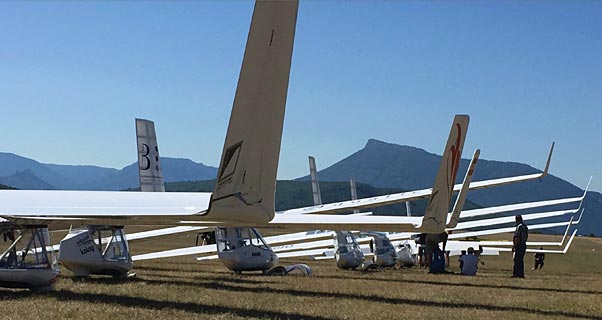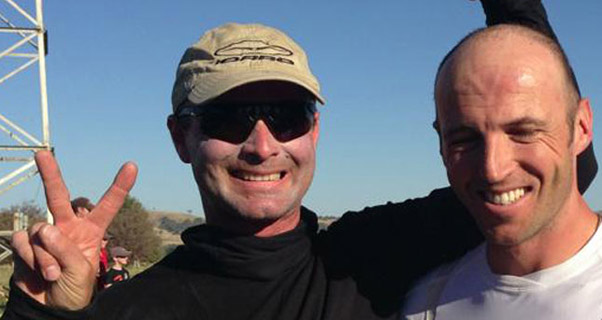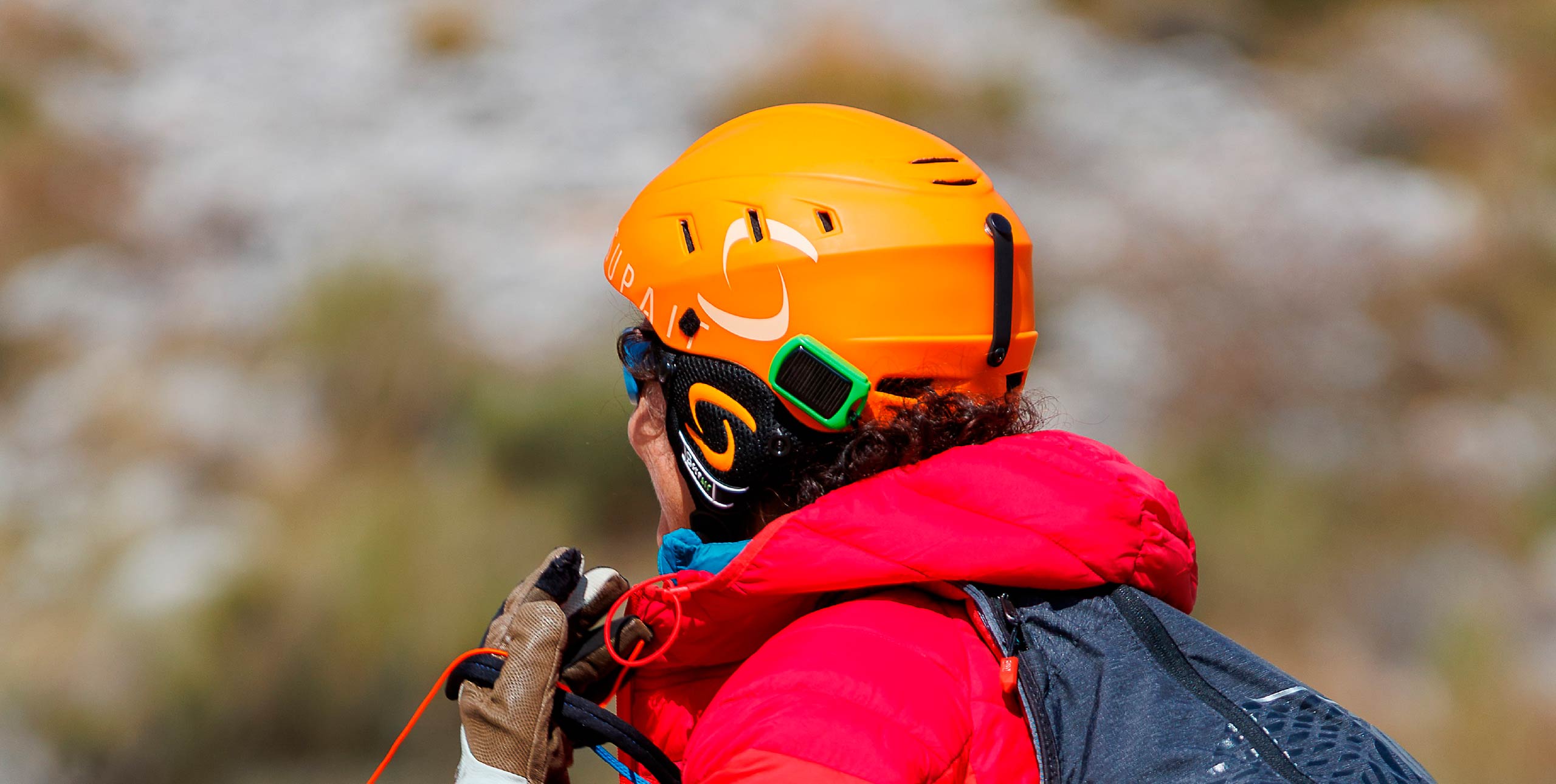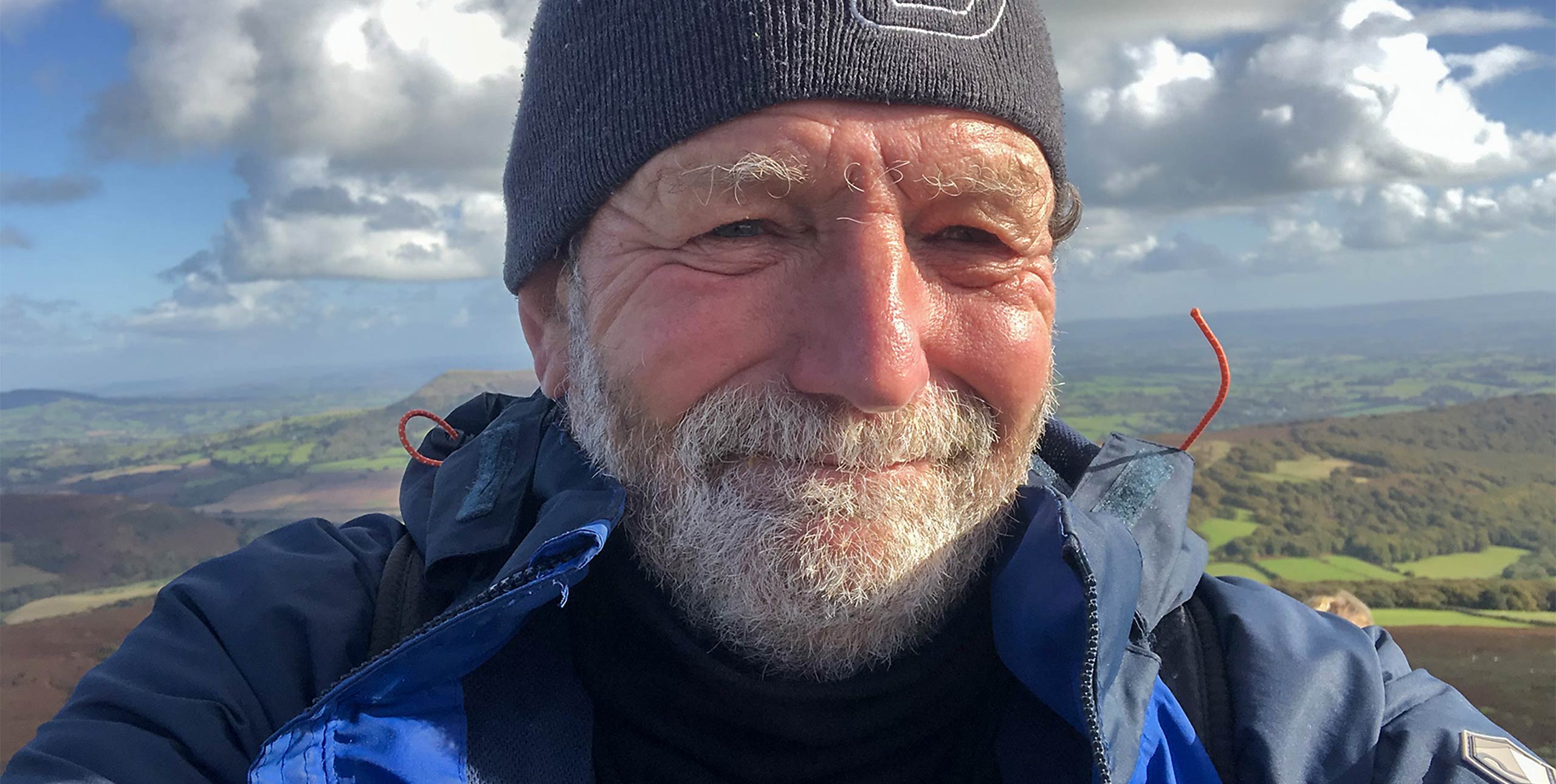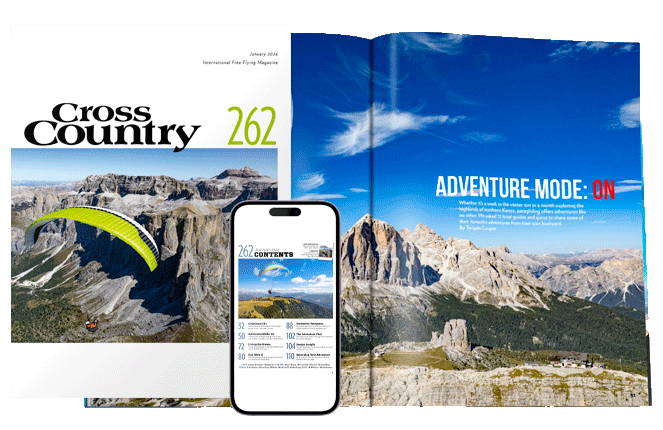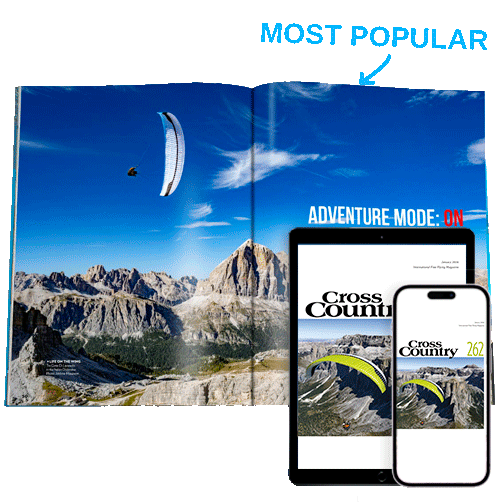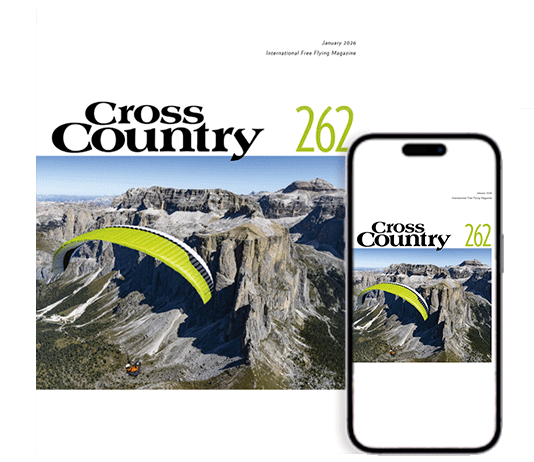Manfred Ruhmer, the world’s best hang glider pilot, flew in the World Air Games in 2001 and filed this report for XCmag.com
This article regards the World Air Games (WAG) that took place last month in Spain. Since Cross Country will soon publish articles concerning this event, I will only talk about things from my personal point of view.
Before the competition From the very beginning of the year it was clear to me that my main goal was this competition. I started working on my gear in January or February and everything I did, every other competition I flew, was just all part of my preparation for the BIG event. I invested a lot of time on getting everything ready which allowed me to get to Spain with excellent equipment, great confidence and lots of motivation.
I did not fly in the Pre-Worlds/WAG last year so I did not know what the area was like and what flying there would be like. I had only heard that it was “blue”, very stable and that this was not the best place to be flying a World Championship during this time of the year because it was too close to the ocean.
There were different opinions: some were quite negative and some others positive’I really had no idea what I should expect from this site so the best solution for me was to get there early and see for myself! After winning the competition in Millau (France) I drove to Spain with Josef Zweckmayr and Christian Ciech; we got there about a week before most of the other pilots.
This period of time was important for me since it gave me the opportunity to get to know the area a little. Unluckily or luckily, depending on which way you see it, before the competition we had a couple of excellent flying days because a cold front came through bringing some fresh air and a cooler, humid air mass; it was awesome to fly but we knew then that these were rare days and that we would not encounter days like this during the competition!
The area was good, I really liked the combination of mountains, hills and flatlands. During the training days we landed in an landing zone (LZ) on the lee side of the mountain, it was not really an ideal LZ; unfortunately Mike Barber from the US Team hurt himself and was not able to fly the comp. Before any comp and especially before a BIG comp, pilots always hesitate a bit about their own gear compared with the rest. From the very beginning it was clear for Robert and me that our gliders were flying unquestionably good.
A Little Something About Day 1
As in every competition the first day is crucial, it is always important to have a good start. In the first day, actually you will only lose if you make any mistakes because you are then forced to recover in the following days.
With the weather conditions and the tasks we had, it was not really possible to recover lost points. Conservative flying was the rule, there was no real racing in this comp. In this particular competition the first day was not only important but quite tricky as well! The last turnpoint (TP) was set a long way out into the flatlands and the more you flew into the flatlands the worse the conditions got. A lot of pilots landed at the TP either on their way there or on their way to goal.
Some of them got there too low and some others could not find any lift. It was very important that you could climb and stay up even in the weakest conditions. For instance, this hurt Robert Reisinger a lot because he was flying with too much ballast for the day and was not able to use the weakest thermals. For me it was very important to have flown good on day 1, I came in third for the day behind a Ukrainian and, if I am not wrong, Andreas Olsson form Sweden.
The Competition in General
This was a competition where the luck factor was somewhat higher than in the other competitions. After this first day, I started behind most of my direct competitors and was able to stay close to them and “have them under control”; especially Gerolf Heinrichs who was number two on the ranking list after a couple of tasks.
I managed to make really good decisions at the beginning of the comp which helped me reinforce my leading position. I could not really believe how late we were starting our tasks, we would take the startgate between 16:45 and 17:30 on most days, in normal comps you get to goal around that time! The best thing about this was that drove up to launch late, around 11am, and there was no need to get up that early! Take-off was very small and there was dust everywhere, your gear was always dirty; but I think that the organizers were able to make the best out of this place’Some days were still definitely critical.
Flying in gaggles was dangerous in these weak conditions. There were often hazardous situations. One of these was above launch where pilots would not leave and the organizers would close launch for safety reasons. The most tricky part here was that holding pilots on the ground was not really fair since it totally excluded them from getting bonus points and/or having the same chance to start the task as the others.
Due to the lack of mountain range and/or clouds plus the weak conditions, no one flew out on their own and had to wait for a group to go with; this also created the huge gaggles over launch. On one particular day, I got stuck on launch for ages since they closed the window twice as I was ready for take off.
Another particular situation was having huge gaggles down the course. There was a day where close to Olvera (a TP for that task) we had the pilots getting to the TP and those leaving it trying to climb on the same weak thermal! It felt like half the pilots or even more were there. The problem was worsened by a couple of pilots who were always flying way too aggressive. A lot of pilots, from different countries and different flying levels complained about these pilots making it unsafe to fly in the thermals together. Personally, I know you could tell when these pilots were NOT around because the pilots were all flying “peacefully”.
A couple of days were cancelled due to stability, to be honest, I cannot recall a day in any competition where a sunny day with not a lot of wind would be cancelled. Another day was cancelled because the wind came too much from the North and there was no proper launch for that wind direction and it would not have been possible to safely launch all the competitors within a reasonable period of time, from the East or West launches. The thing was that it was an awesome day with cumulus and cloud base at approx. 3,000 m (almost 10,000 ft)!
As I said before, after the first couple of tasks I was in front, at this point my strategy turned into always knowing where my rivals where. I kept an eye on Gerolf but I never really noticed him taking the risk and attacking. If I am not wrong, I always placed in front of him.
My Equipment
I was very happy with my glider. Regarding Gerolf, I had a slight advantage over him in the thermals, since my glider was climbing better than his and when we went on slow glides I had a slightly better performance. We did not really have the chance to compare our gliders on fast glides, Gerolf insisted that his glider would be definitely better but I am sure that they would glide equally. I was very happy with my Woody Valley harness prototype too. I flew with an emergency parachute on each side and the pockets are really nice.
Since I am no longer flying competitions with a camera (due to GPS direct scoring) and I did not have a radio, I wanted to make my harness symmetrical plus I can always use some extra weight. I am more than satisfied with my personal result, with the way the Austrian Team flew, both in Class I and II and with the results Icaro 2000 achieved. From my point of view, the outcome was just outstanding.
• Got news? Send it to us at news@xccontent.local
Subscribe to the world’s favourite hang gliding and paragliding magazine


